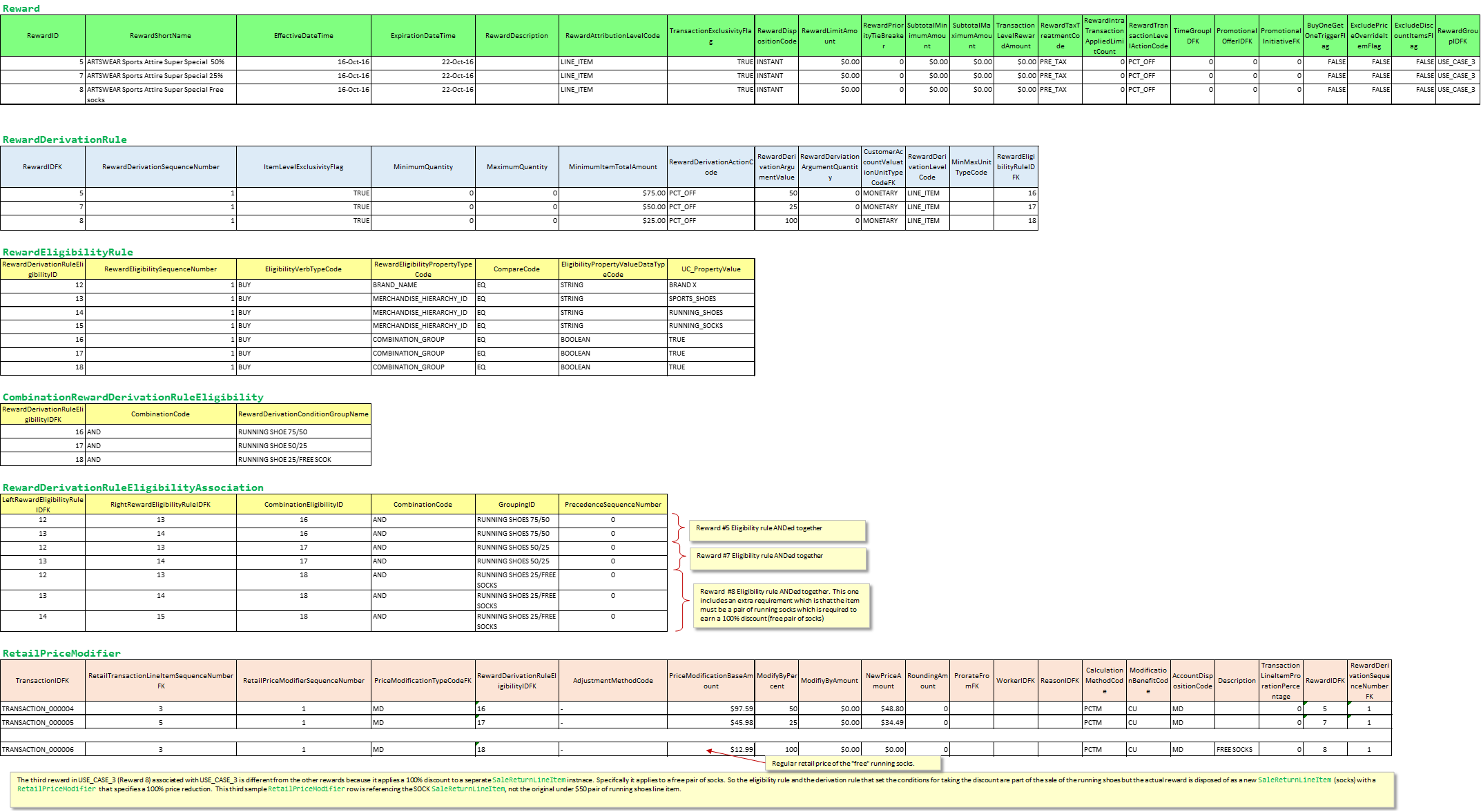Business Description
ARTSWEAR a super sports emporium is having a X Brand blowout sale. Here is the deal:
•Buy X Brand running shoes with a retail value of $75 or more get a running suit at 50% off OR
•Buy X Brand running shoes with a retail value between $50 and $74.99 get a running suit at 25% off OR
•Buy X Brand running shoes with a retail value between $25 and $49.99 get a free pair of running socks. Note that this reward appends a SaleReturnLineItem and associated RetailPriceModifier to take a 100% discount on the socks (since they are free). The running shoe line item and socks line item may be cross referenced through the RetailTransactionLineItemAssociation entity type.
•If a customer purchases X Brand running shoes with a retail value of under $25 there is no reward and discount.
•This special deal starts October 16, 2016 and runs through October 22, 2016.
•There is a limit of one reward per transaction;
•It is open to ALL CUSTOMERS
Assumptions
•This is a targeted X Brand promotion. While taken as a discount in the retail transaction, the retailer is subsequently reimbursed for 80% of the discount value by X Brand;
•The rewards are attributable to specific SaleReturnLineItem instances for X Brand, Shoe Department, Running Shoe Class items (that's three eligibility rules around item)
•There are three distinct rewards. Only one reward may apply to a given transaction (because of the one reward per transaction limit). In a scenario where a customer purchases more than one pair of X Brand running shoes, the pair with the best discount will automatically be selected. The other pairs of X Brand running shoes will be sold at their regular retail price.
Eligibility
The following conditions must be satisfied within a RetailTransaction to derive this Reward
•This is a line item attributed reward.
•If the item being purchased is a pair of X Brand running shoes it is eligible to be evaluated for reward derivation
Derivation
There are three RewardDerivation rules associated with this use case. As noted earlier because a retail transaction may only have one reward these are mutually exclusive derivation rules. This use case illustrates how value ranges are used to bracket different rewards.
•The first two derivation rules are a 50% and 25% discount respectively. These will be disposed of as two RetailPriceModifer instances.
•The third derivation rule is a free pair of running socks. It involves adding a new SaleReturnLineItem to capture the sale of the running socks along with a RetailPriceModifier reducing them to zero price (since they are free).
Disposition
The two reward derivations require the creation of three RetailPriceModifier instances (which are part of the RetailTransaction). In the worked example, there are three separate transactions shown to illustrate three alternative rewards (which are limited to one reward per transaction)
•Three different RetailTransactionInstnance with a SaleReturnLineItem that references a Brand X running shoe, each with a RetailPriceModifier to capture the discount. Note that the free socks requires its own SaleReturnLineItem with a 100% discount (captured in a RetailPriceModifier entity) because it is a different SKU from the running shoes.
Accounting Disposition
•This use case is a point of sale markdown..
Worked Entity Attribute Value Example
The next figure presents filled in entities. The values are made up examples designed to show how the reward scenario rules will be stored in the ARTS ODM entities.
Figure 48 - Use Case 3 - ARTSWEAR Sports Attire Super Special
